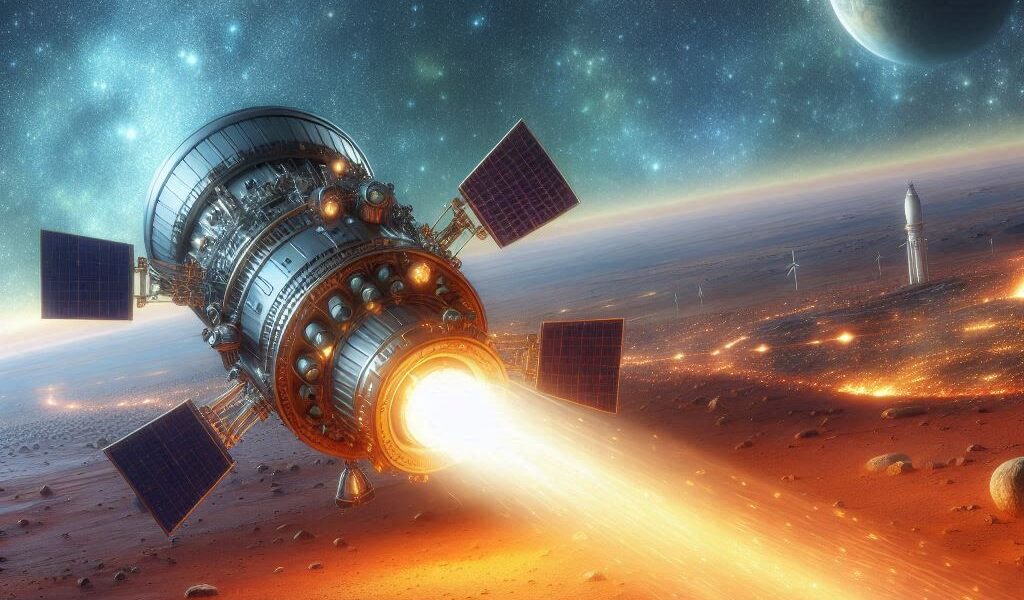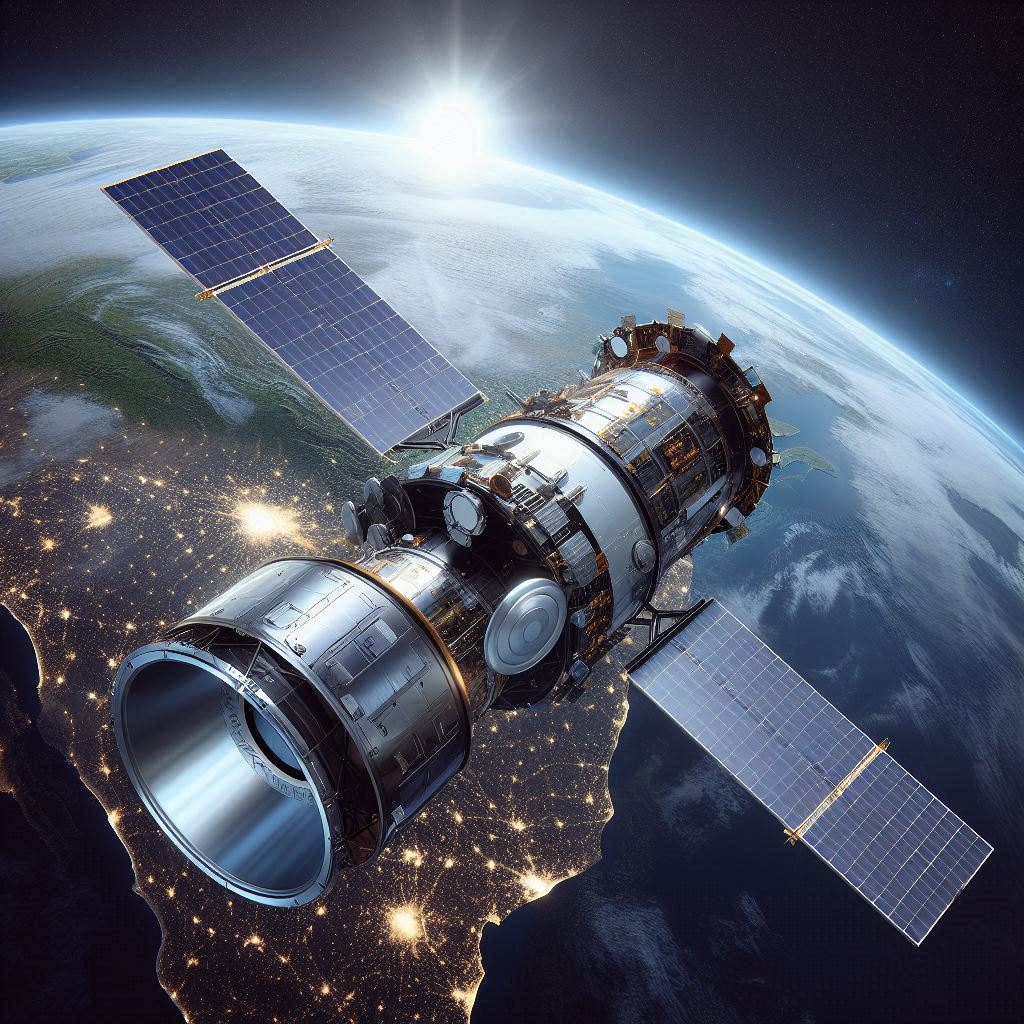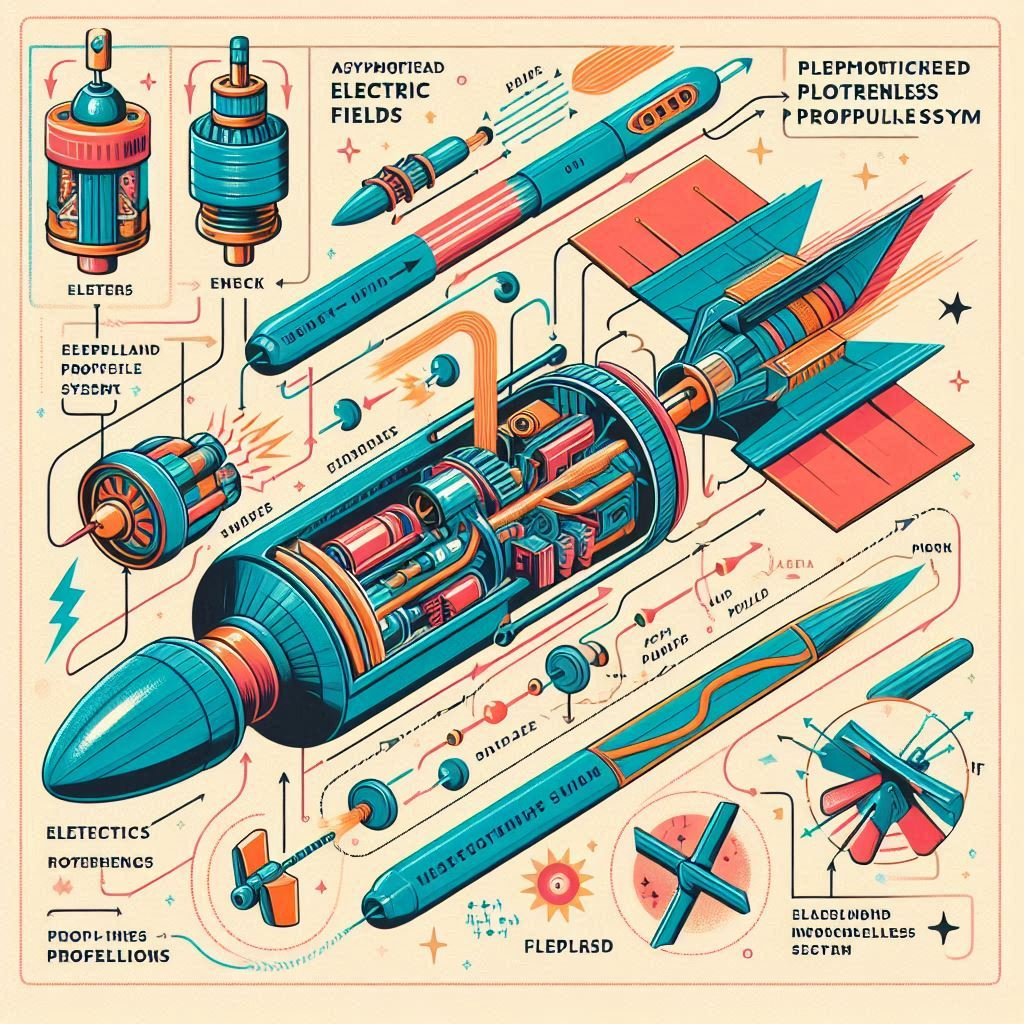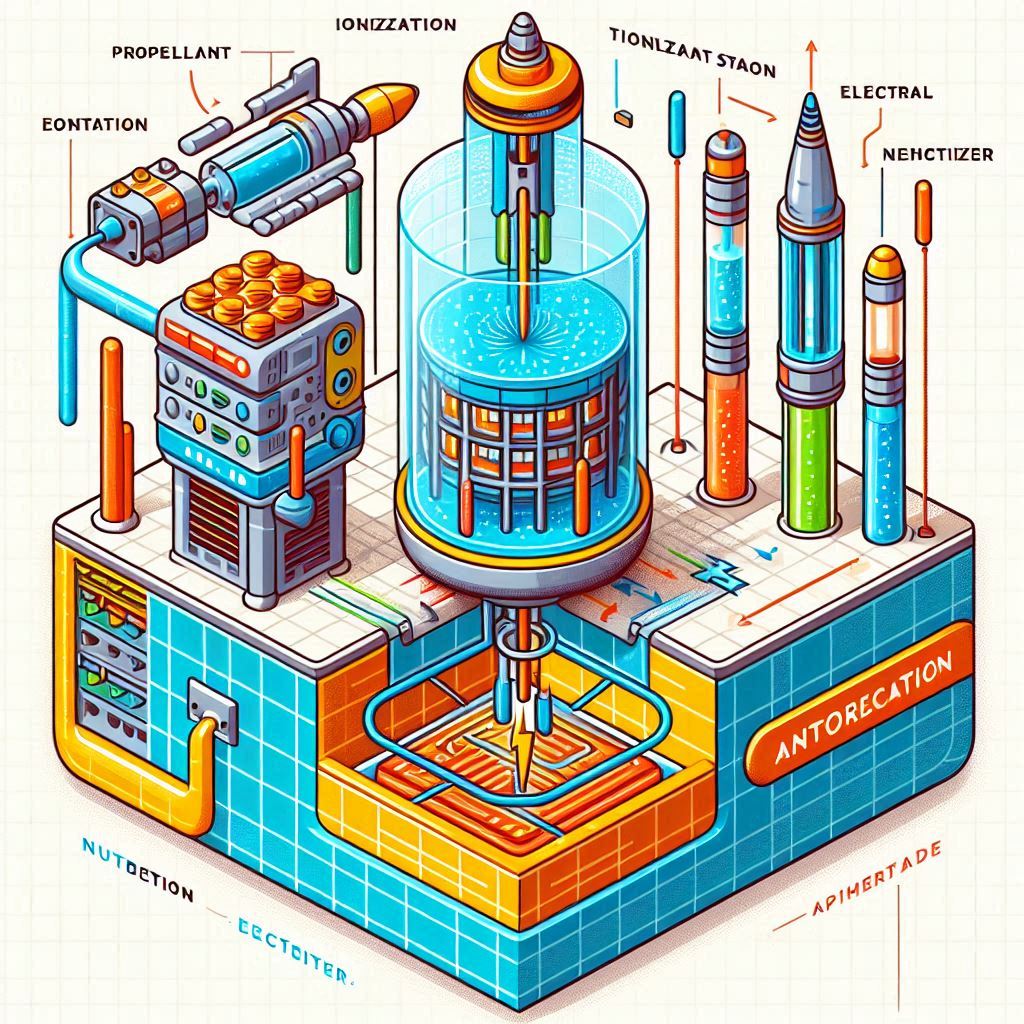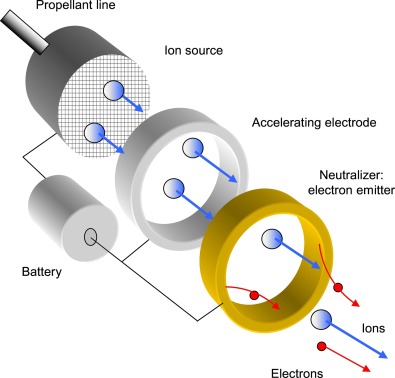Contents
- 1 Thrust Without the Need for Traditional Fuel That Defies Laws of Physics
- 2 Prof. Aécio D’Silva, Ph.D AquaUniversity
- 3
- 4 The Principles of Asymmetrical Electric Fields and Electrostatic Pressure Propulsions
- 5 What Are Asymmetrical Electric Fields?
- 6 What is electrostatic pressure propulsion?
- 7
- 8 How do Asymmetrical Electric Fields and Electrostatic Pressure Propulsions Work?
- 9
- 10 Explanation of how Asymmetrical Electric Fields and Electrostatic Pressure are differentiated and how they’re used:
- 11
- 12 Here’s a Simplified Explanation of How an Asymmetrical Electric Fields Propulsion System Works:
- 13 Advantages of Asymmetrical Electric Fields Propulsion
- 14
- 15 There’s also a simplified explanation of how an electrostatic pressure propulsion system works:
- 16 Advantages of Electrostatic Propulsion
- 17 Physics Behind Asymmetrical Electric Field Propulsion
- 18 How can I build my own asymmetrical electric field propulsion system?
- 19
- 20 Physics Behind Electrostatic Propulsion
- 21 Advantages of Electrostatic Propulsion
- 22 Challenges
- 23
- 24 How can I build my own electrostatic propulsion system?
- 25 Challenges and Future Prospects
- 26
- 27 Efficiency of Asymmetrical Electric Fields Propulsion Systems
- 28 Efficiency of Electrostatic Propulsion Systems
- 29 Comparison of Asymmetrical Electric Fields and Electrostatic Pressure
- 30
- 31 Conclusion of Asymmetrical Electric Fields and Electrostatic Pressure
Thrust Without the Need for Traditional Fuel That Defies Laws of Physics
Prof. Aécio D’Silva, Ph.D
AquaUniversity
Asymmetrical Electric Fields and Electrostatic Pressure propulsion play a crucial role in propellantless propulsion systems by leveraging electric fields to generate thrust without the need for traditional fuel. Here’s a detailed explanation:
The Principles of Asymmetrical Electric Fields and Electrostatic Pressure Propulsions
Asymmetrical Electric Fields and Electrostatic Pressure propellantless propulsions systems use electric fields to create a force that propels a spacecraft. The basic idea is to generate a net force by manipulating charged particles or fields. This can be achieved through various methods, such as using asymmetrical electric fields and electrostatics pressure to produce propellantless thrust.
What Are Asymmetrical Electric Fields?
Asymmetrical electric fields, also known as asymmetric rectified electric fields (AREFs), occur when an electric field is not uniform in all directions. This can happen in various scenarios, such as when different types of ions in a liquid have unequal mobilities, or when an oscillating voltage is applied across an electrolyte with blocking electrodes.
In these fields, the electric force on charged particles can vary depending on their position and the direction of the field. This can lead to interesting effects, such as particles following curved paths or the creation of steady electric fields from oscillating potentials.
What is electrostatic pressure propulsion?
Electrostatic pressure propulsion is an advanced concept in spacecraft propulsion that utilizes electrostatic fields to generate thrust. This method creates a voltage difference across electrically conductive surfaces, resulting in an electric field. The electric field then produces an electrostatic pressure force on the surface. If these forces are asymmetrical, they can generate a net force that propels the spacecraft.
This type of propulsion is still largely experimental but holds promises for efficient, propellant-less space travel. It could potentially enable high-speed travel within our solar system, significantly reducing travel times to destinations like Mars.
How do Asymmetrical Electric Fields and Electrostatic Pressure Propulsions Work?
- Electric Field Generation:
- An electric field is created using electrodes or other means. This field can be static or dynamic, depending on the design of the propulsion system.
- Charge Manipulation:
- Charged particles, such as ions, are manipulated within the electric field. By controlling the distribution and movement of these charges, a net force can be generated.
- Thrust Production:
- The interaction between the electric field and the charged particles results in a force that can propel the spacecraft. This force is generated without the need to expel mass, making it a propellantless system.
Key Concepts
- Asymmetrical Electric Fields:
- One approach involves creating asymmetrical electric fields that produce a net force. This method has been explored by researchers like Dr. Charles Buhler, who demonstrated that electric fields alone can generate sustainable thrust.
- Electrostatic Pressure:
- Another concept is using electrostatic pressure differences to create thrust. By varying the electric field strength across different parts of the propulsion system, a directional force can be achieved.’
Explanation of how Asymmetrical Electric Fields and Electrostatic Pressure are differentiated and how they’re used:
Let’s break down these two key concepts to better understand how the two Key concepts are set apart and how they’re applied:
Asymmetrical Electric Fields
Definition: Asymmetrical electric fields occur when the electric field is not uniform in all directions. This can happen due to various factors, such as different ion mobilities in a liquid or an oscillating voltage applied across an electrolyte with blocking electrodes.
Applications:
- Electrokinetic Devices: Used in microfluidic devices to manipulate particles and fluids.
- Electrophoresis: Utilized in separating molecules based on their size and charge.
- Dielectrophoresis: Employed to move neutral particles in non-uniform electric fields, useful in cell sorting and analysis.
Electrostatic Pressure
Definition: Electrostatic pressure is the force per unit area exerted by an electric field on a surface charge distribution. This pressure arises because the electric field exerts a force on the charges present on the surface of a conductor.
Applications:
- Capacitors: The pressure helps in understanding the forces between the plates of a capacitor.
- Electrostatic Actuators: Used in MEMS (Micro-Electro-Mechanical Systems) to create movement or force.
- Surface Tension Modulation: In applications like electrowetting, where the shape of a liquid droplet is controlled by an electric field.
Differentiation of Asymmetrical Electric Fields and Electrostatic Pressure
- Nature of Fields: Asymmetrical electric fields are non-uniform and vary in different directions, while electrostatic pressure is a result of the uniform electric field acting on a surface charge.
- Force Distribution: Asymmetrical electric fields can create complex force patterns on particles, leading to movement in specific directions. Electrostatic pressure, on the other hand, acts uniformly on the surface charge, creating pressure that can deform or move the surface.
- Applications: Asymmetrical electric fields are often used in particle manipulation and separation techniques, while electrostatic pressure is crucial in understanding forces in capacitors and actuators.
Here’s a Simplified Explanation of How an Asymmetrical Electric Fields Propulsion System Works:
- Asymmetrical Electrodes: The system uses electrodes of different sizes or shapes to create an asymmetrical electric field when a high voltage is applied. This asymmetry is crucial for generating a net force.
- Electric Field Creation: When the high voltage is applied, it creates an electric field between the electrodes. Because the electrodes are asymmetrical, the electric field is stronger on one side than the other.
- Force Generation: The electric field exerts a force on charged particles in the system. Due to the asymmetry, the force is unevenly distributed, resulting in a net force that pushes the system in one direction.
- No Propellant Needed: Unlike traditional propulsion systems that expel mass to generate thrust, this system relies solely on the electric field to create movement. This means it doesn’t need to carry propellant, making it lighter and simpler.
Key Points
- Asymmetrical Electrodes: Different sizes or shapes create an uneven electric field.
- High Voltage: Applied to generate the electric field.
- Net Force: Uneven distribution of force creates thrust.
- Propellantless: No need for traditional fuel, reducing weight and complexity.
This innovative approach uses the unique properties of asymmetrical electric fields to create a new form of propulsion that could revolutionize space travel.
Advantages of Asymmetrical Electric Fields Propulsion
Asymmetrical electric fields propulsion, often explored using asymmetrical capacitors, offers several notable advantages:
- Efficiency: This method directly converts electrical energy into mechanical force without the need for moving parts, which can lead to higher efficiency compared to traditional propulsion systems.
- Stealth: Since there are no exhaust gases or moving parts, this type of propulsion can significantly reduce acoustic and heat signatures, making it ideal for stealth applications.
- Maneuverability: The precise control over electric fields allows for improved maneuverability, which is beneficial for both atmospheric and space travel.
- Reduced Maintenance: The lack of moving parts also means fewer mechanical failures and lower maintenance requirements, potentially increasing the lifespan of the propulsion system.
- Environmental Impact: As it doesn’t rely on chemical propellants, this propulsion method could reduce the environmental impact associated with traditional rocket launches.
These advantages make asymmetrical electric fields propulsion a promising area of research for future aerospace and space exploration technologies.
There’s also a simplified explanation of how an electrostatic pressure propulsion system works:
- Propellant Tank: This tank stores the propellant, which is usually a gas like xenon. The propellant is released in controlled amounts into the ionization chamber.
- Ionization Chamber: In this chamber, the propellant gas is ionized, meaning electrons are stripped from the gas atoms, creating positively charged ions. This is typically done using an electric field or electron bombardment.
- Gridded Acceleration Stage: The positively charged ions are then accelerated through a series of grids that create a strong electric field. The ions are repelled by the positively charged grid and attracted to the negatively charged grid, gaining high velocity as they pass through.
- Neutralizer Electrode: As the ions exit the propulsion system, they are neutralized by electrons emitted from a neutralizer electrode. This prevents the spacecraft from becoming electrically charged, which could interfere with its operation.
- Flow of Propellant Ions and Neutralizing Electrons: Arrows in the diagram indicate the flow of ions from the ionization chamber through the acceleration stage and out into space, as well as the flow of electrons from the neutralizer to neutralize the ion beam.
This system works by using electric fields to accelerate ions to high speeds, creating thrust. The high-speed ions are expelled from the spacecraft, and by Newton’s third law of motion, the spacecraft is pushed in the opposite direction, generating propulsion.
Advantages of Electrostatic Propulsion
- Efficiency: Electrostatic propulsion systems are highly efficient as they do not require traditional fuel. This allows for longer missions and greater payload capacity.
- Cost-Effectiveness: Reducing or eliminating the need for fuel significantly lowers the cost of space missions, making space exploration more accessible.
- Sustainability: These systems are more environmentally friendly as they do not rely on chemical propellants, reducing the environmental impact of space travel.
Physics Behind Asymmetrical Electric Field Propulsion
Here’s a simplified explanation of the physics behind asymmetrical electric field propulsion:
Basic Principle
- Asymmetrical Electrodes: The system uses electrodes of different sizes or shapes to create an asymmetrical electric field when a high voltage is applied. This asymmetry is crucial for generating a net force.
- Electric Field Creation: When a high voltage is applied across the electrodes, an electric field is generated. Due to the asymmetry of the electrodes, the electric field is stronger on one side than the other.
- Electrostatic Pressure: The electric field exerts a force on the charged particles in the system. This force is known as electrostatic pressure. Because the field is asymmetrical, the pressure is unevenly distributed, resulting in a net force that can propel the system.
Detailed Physics
- Coulomb’s Law: The force between two charges is given by Coulomb’s law, which states that the force is proportional to the product of the charges and inversely proportional to the square of the distance between them. In an asymmetrical electric field, this force varies across the field.
- Electric Field Gradient: The gradient of the electric field (how it changes in space) is different in an asymmetrical setup. This gradient creates a differential force on the charged particles, leading to a net movement.
- Electrostatic Force: The electrostatic force on a charged particle in an electric field is given by ( F = qE ), where ( q ) is the charge and ( E ) is the electric field. In an asymmetrical field, this force is not uniform, leading to a net thrust.
- Net Thrust: The asymmetry in the electric field causes a net force in one direction. This is because the force vectors on the charged particles do not cancel out completely, resulting in a net thrust that can propel the system.
Applications
- Spacecraft Propulsion: This principle can be used to create propulsion systems for spacecraft that do not require traditional propellant, reducing weight and increasing efficiency
- Micro and Nano Satellites: Ideal for small satellites where space and weight are at a premium
This innovative approach leverages the unique properties of asymmetrical electric fields to create a new form of propulsion that could revolutionize space travel.
How can I build my own asymmetrical electric field propulsion system?
Building your own asymmetrical electric field propulsion system can be an exciting project! Here’s a simplified guide to get you started:
Materials Needed
- High Voltage Power Supply: Capable of generating several kilovolts (kV).
- Asymmetrical Electrodes: One larger and one smaller electrode, often made from conductive materials like aluminum or copper.
- Insulating Material: To separate the electrodes and prevent short circuits.
- Mounting Structure: To hold the electrodes in place.
- Wires and Connectors: For electrical connections.
- Safety Equipment: Gloves, goggles, and other protective gear.
Steps to Build
- Design the Electrodes: Create two electrodes of different sizes or shapes. Asymmetry is crucial for generating the propulsion force.
- Mount the Electrodes: Secure the electrodes on a non-conductive mounting structure, ensuring they are properly insulated from each other.
- Connect the Power Supply: Attach the high-voltage power supply to the electrodes. The larger electrode is typically connected to the positive terminal, and the smaller one to the negative terminal.
- Apply High Voltage: Carefully increase the voltage to create a strong electric field between the electrodes. The asymmetrical design will cause an uneven distribution of electrostatic pressure, resulting in a net force.
- Observe the Thrust: If everything is set up correctly, you should observe a small thrust force pushing the system in the direction of the smaller electrode.
Safety Precautions
- High Voltage: Always handle high-voltage equipment with extreme care. Ensure all connections are secure and insulated.
- Protective Gear: Wear appropriate safety gear, including gloves and goggles.
- Supervision: If you’re new to working with high voltage, seek supervision or assistance from someone experienced.
Additional Tips
- Experiment with Electrode Shapes: Different shapes and sizes of electrodes can affect the efficiency and thrust of the system. Experiment to find the optimal configuration.
- Measure Thrust: Use a sensitive scale or other measuring device to quantify the thrust produced by your system.
- Documentation: Keep detailed notes of your setup, experiments, and results to refine your design.
Resources
- Research Papers: Look into academic papers and technical reports on asymmetrical capacitors and electric propulsion for more detailed information check out these links:
https://forum.nasaspaceflight.com/index.php?topic=60131.0
https://www.sae.org/publications/technical-papers/content/2014-01-2221/.
- Online Forums: Join forums and communities focused on electric propulsion and DIY projects for advice and support
https://ntrs.nasa.gov/api/citations/20040171929/downloads/20040171929.pdf.
Building an asymmetrical electric field propulsion system can be a rewarding project that combines physics, engineering, and creativity. Good luck and stay safe!
Physics Behind Electrostatic Propulsion
Let’s dive into the physics behind electrostatic propulsion, a fascinating technology that leverages electric fields to generate thrust.
The Basics of Electrostatic Propulsion
Electrostatic propulsion systems, such as ion thrusters, use electric fields to accelerate charged particles (ions) to high velocities, creating thrust. This process involves several key principles of physics:
- Ionization:
- The propellant, often a noble gas like xenon, is ionized, meaning electrons are stripped from the atoms, creating positively charged ions.
- Acceleration:
- These ions are then accelerated by an electric field. The electric field is created by applying a high voltage between two grids or electrodes. The positively charged ions are attracted to the negatively charged grid, accelerating them to high speeds.
- Thrust Generation:
- As the ions exit the thruster at high velocity, they generate thrust according to Newton’s third law of motion: for every action, there is an equal and opposite reaction. The momentum of the expelled ions propels the spacecraft in the opposite direction.
Key Concepts
Electric Fields and Force
The electric field ((E)) is a vector field that represents the force per unit charge exerted on a charged particle. The force ((F)) on a charged particle in an electric field is given by:
F = qE
where (q) is the charge of the particle. In electrostatic propulsion, this force accelerates the ions, creating thrust.
Specific Impulse
Specific impulse ((I_{sp})) is a measure of the efficiency of a propulsion system. It is defined as the thrust produced per unit of propellant flow rate and is given by:
I_{sp} = \frac{v_e}{g_0}
where (v_e) is the exhaust velocity of the ions, and (g_0) is the standard gravitational acceleration. Higher specific impulse indicates a more efficient propulsion system.
Advantages of Electrostatic Propulsion
- High Efficiency:
- Electrostatic propulsion systems have a high specific impulse, meaning they can achieve high exhaust velocities with relatively low propellant consumption.
- Long Duration Missions:
- These systems are ideal for long-duration missions, such as deep space exploration, because they use propellant more efficiently than chemical rockets.
- Precision Maneuvering:
- Electrostatic thrusters provide precise control over thrust, making them suitable for tasks like satellite station-keeping and fine-tuning spacecraft orbits.
Challenges
Despite their advantages, electrostatic pressure propulsion systems face several challenges:
- Power Requirements:
- High-voltage power supplies are needed to create the electric fields, which require significant electrical power, often provided by solar panels or nuclear sources.
- Ion Erosion:
- The grids or electrodes can suffer from ion erosion over time, which can limit the lifespan of the thruster.
Electrostatic propulsion represents a significant advancement in space travel technology, offering high efficiency and precision for a variety of space missions. As research continues, improvements in power generation and materials will likely enhance the performance and durability of these systems, paving the way for more ambitious space exploration endeavors.
How can I build my own electrostatic propulsion system?
Building your own electrostatic propulsion system can be an exciting and educational project. Here’s a simplified guide to help you get started:
Materials Needed
- High Voltage Power Supply: A source that can provide a high voltage, typically in the range of 10-30 kV.
- Electrodes: Copper wire or aluminum foil can be used to create the electrodes.
- Insulating Support: Materials like balsa wood or plastic to hold the electrodes in place.
- Power Supply: A bench power supply or batteries to power the high voltage source.
- Safety Equipment: Gloves, goggles, and other protective gear to handle high voltage safely.
Step-by-Step Instructions
Step 1: Prepare the Electrodes
- Cut the Copper Wire: Cut two pieces of copper wire, one longer than the other. The longer wire will act as the positive electrode, and the shorter one as the negative electrode.
- Shape the Electrodes: Shape the longer wire into a fine point or a grid pattern to maximize the electric field. The shorter wire can remain straight.
Step 2: Set Up the Insulating Support
- Mount the Electrodes: Attach the electrodes to the insulating support. Ensure they are securely fixed and positioned parallel to each other, with a small gap in between.
- Secure the Setup: Use non-conductive materials like balsa wood to hold the electrodes in place.
Step 3: Connect the High Voltage Power Supply
- Attach the Wires: Connect the positive terminal of the high voltage power supply to the longer electrode and the negative terminal to the shorter electrode.
- Ensure Proper Insulation: Make sure all connections are well insulated to prevent accidental shocks.
Step 4: Power Up and Test
- Turn on the Power Supply: Gradually increase the voltage while observing the setup. You should see a faint glow or feel a slight breeze if the system is working correctly.
- Measure the Thrust: Use lightweight objects like tissue paper to detect the airflow generated by the system.
Safety Precautions
- High Voltage Warning: High voltage can be extremely dangerous. Always handle with care and use appropriate safety gear.
- Avoid Direct Contact: Never touch the electrodes or wires while the system is powered on.
- Work in a Safe Environment: Ensure your workspace is free of flammable materials and has proper ventilation.
Building an electrostatic propulsion system is a great way to explore the principles of electrostatics and propulsion. While the thrust generated by a DIY system will be minimal, it provides valuable insights into the technology and its potential applications.
Electrostatic pressure propulsion represents a significant advancement in space travel technology, offering high efficiency and precision for a variety of space missions. As research continues, improvements in power generation and materials will likely enhance the performance and durability of these systems, paving the way for more ambitious space exploration endeavors.
For more detailed instructions and advanced projects, you can refer to resources like https://makezine.com/projects/ionic-thruster/ and https://www.instructables.com/DIY-Simplest-Multistage-Ion-Thrust-Plasma-Engine/
https://makezine.com/projects/ionic-thruster/
https://www.instructables.com/DIY-Simplest-Multistage-Ion-Thrust-Plasma-Engine/.
Challenges and Future Prospects
While electrostatic propulsion holds great promise, it also faces challenges such as the need for high-power electric fields and advanced power generation solutions. However, ongoing research and development are paving the way for more efficient and reliable systems that could revolutionize space travel.
Efficiency of Asymmetrical Electric Fields Propulsion Systems
- Efficiency: These systems are still in the experimental stage, but they show promise for high efficiency due to their unique method of generating thrust without propellant. Efficiency is measured by the ratio of thrust produced to the electrical power consumed. Studies suggest that these systems can achieve efficiencies comparable to or even exceeding traditional electric propulsion methods.
- Advantages: They eliminate the need for propellant, reducing the spacecraft’s mass and potentially increasing the mission duration and flexibility
Efficiency of Electrostatic Propulsion Systems
- Efficiency: These systems, such as ion thrusters and Hall effect thrusters, are well-established and known for their high efficiency. They typically convert 50-70% of the electrical power into thrust. For example, ion thrusters can achieve specific impulses (Isp) of up to 3,000 seconds, making them highly efficient for long-duration missions
- Advantages: They provide a high specific impulse, meaning they can achieve significant changes in velocity with minimal propellant, making them ideal for deep space missions and satellite station-keeping
Comparison of Asymmetrical Electric Fields and Electrostatic Pressure
- Propellant Requirement: Asymmetrical electric fields systems do not require propellant, while electrostatic systems do, although in very small amounts.
- Maturity: Electrostatic propulsion systems are more mature and widely used in current space missions, whereas asymmetrical electric fields systems are still under development and testing.
- Efficiency: Both systems are efficient, but electrostatic systems have a proven track record with specific impulse and thrust-to-power ratios that are well-documented
Conclusion of Asymmetrical Electric Fields and Electrostatic Pressure
Asymmetrical electric field and Electrostatics pressure are fundamental components of propellantless propulsion technology, offering a new way to explore space without the limitations of traditional fuel. As research continues, we can expect to see more innovative applications and advancements in these exciting fields.
References:
https://pubs.aip.org/aip/acp/article/1728/1/020078/582689/Asymmetric-electric-force.
NASA Veteran’s Propellantless Propulsion Drive.
https://link.springer.com/content/pdf/10.1007/978-3-7091-0547-4_8.pdf:
Springer – Propellantless Propulsion.
https://ntrs.nasa.gov/citations/20020022193:
NASA’s Small Spacecraft Technology.
Aerospace Defense Review
https://thedebrief.org/nasa-veterans-propellantless-propulsion-drive-that-physics-says-shouldnt-work-just-produced-enough-thrust-to-defeat-earths-gravity/:
NASA Veteran’s Propellantless Propulsion Drive.
https://interestingengineering.com/innovation/nasa-veterans-propellantless-propulsion-drive-defies-laws-of-physics:
NASA expert’s propellantless propulsion drive defies Physics
https://www.nextbigfuture.com/2024/04/exodus-propulsion-technologies-claims-huge-space-propulsion-breakthrough.html: Dr Charles Buhler (ex-NASA) on new patented propellent-less drive
